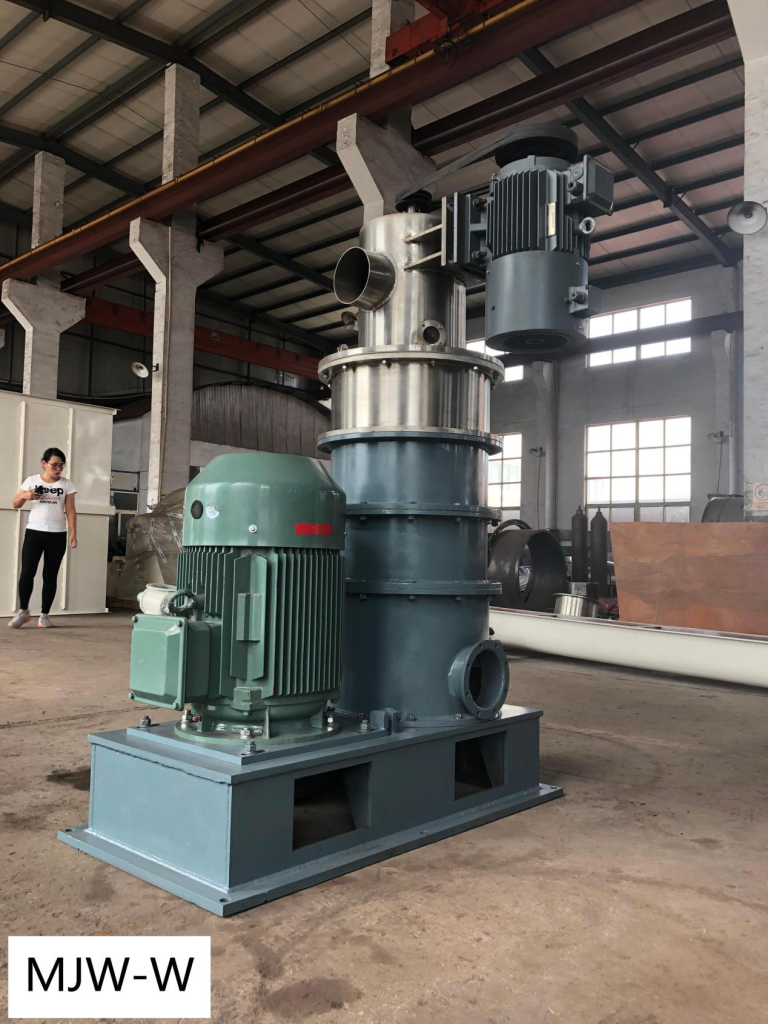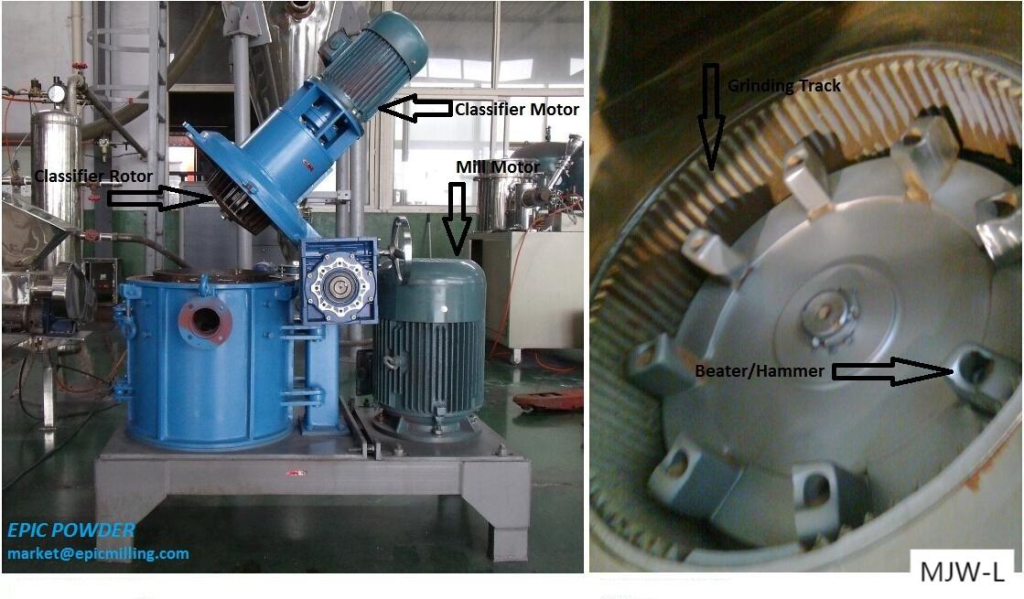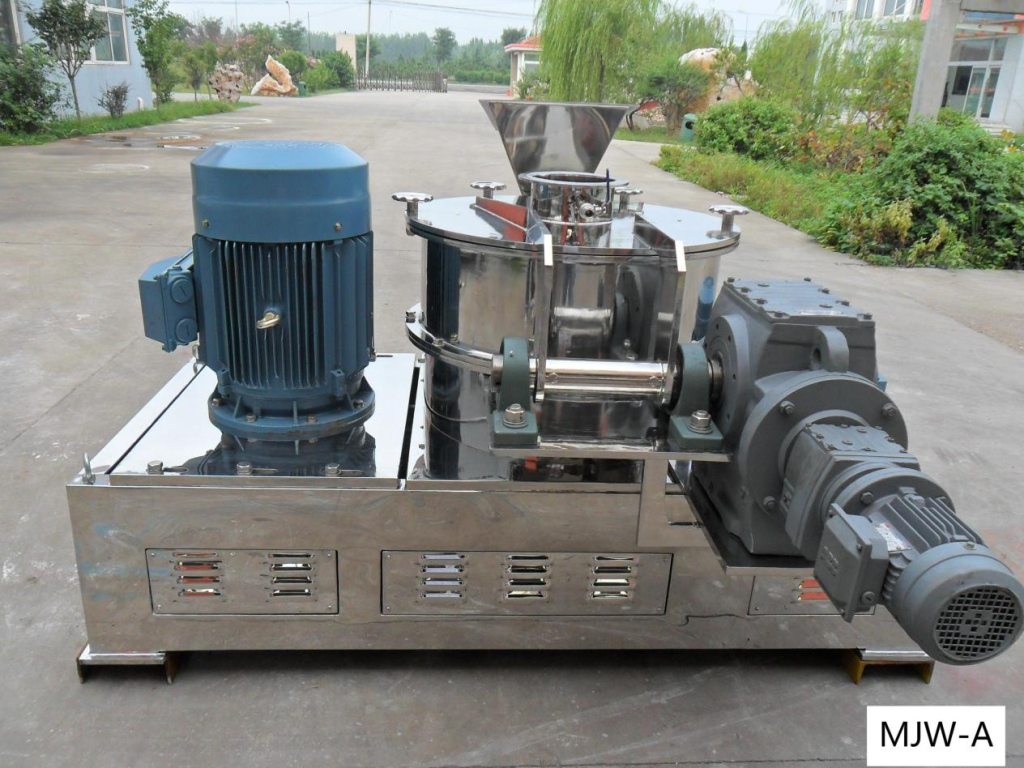1 өлеш

1. Тегермән урнаштырганчы тикшерү
Productionитештергәнче, комплекслы тикшерү үткәрелергә тиеш.
Куркынычсызлык җайланмаларының тулы һәм ышанычлы булуын тикшерегез.
Eachәрбер тоташтыручы өлешнең тоташуы ышанычлымы, машинаның нигезгә яки рамкага нык куелганын, бәйләү болтларының иркен яки төшүен тикшерегез.
Машина капкасын ачып, барлыгын тикшерегез калдыклар тегермән камерасында, ротордагы барлык өлешләр тотрыксызмы, һәм кадакның егылып төшүе яки бозылуы.
Машинаны эшләтеп җибәрегез һәм тарткычның юнәлеше машина тышлыгында кызыл ук юнәлешенә туры килү-килмәвен тикшерегез.
Майлау системасын тикшерегез.
2. Старт сынау
Әгәр дә барлык аспектлар таләпләргә туры килсә, сынауны башлап җибәрегез. Бер сәгать дәвамында йөкне сынап карамаганнан соң, подшипникның температурасының күтәрелүен тикшерегез, өлешләренең аномаль булуын тикшерегез. Температураның күтәрелүе 35 ° C-тан артмаска тиеш. Гадәттә, тикшерү өчен май касәсенә гомуми термометр кертелергә мөмкин (термометр минус бүлмә температурасы белән үлчәнгән температура температураның күтәрелү бәясе). Барлык өлешләр дә таләпләргә туры килгәч, аны җитештерергә мөмкин. Машина башта куллану өчен, машина эчендәге майны һәм датны чистарту өчен иң элек эремчек яки печән эшкәртү яхшырак.
2 өлеш
Тегермәннең өлешчә сыйфаты
1. Чималга характеристика
Тасма комбинатлары гадәттә төрле эшкәртелгән материалларны һәм чәчүлек чималны тартырга тиеш, мәсәлән, салам, мамык сабаклары, кукуруз сабаклары, кукуруз, соя ризыгы һәм бодай.
2. Туклану өчен таләпләр
Тасманың өслек мәйданын арттыру һәм кисәкчәләрнең зурлыгын көйләү ашкайнатуны яхшырта, туклыклы матдәләрне яхшырак үзләштерә һәм ахыр чиктә азык-ит катнашын арттыра ала. Мәсәлән, тавык азыклары бик яхшы булырга тиеш түгел, чөнки тавыклар гранулалар яки җир бөртекләре ашарга яраталар. Каты һәм нечкә азыклар бергә кушылырга мөмкин, һәм алар югары май булырга тиеш; Дуңгызлар өчен туклансаң, яхшырак, ул югары май таләп итми.
3. Чималның физик үзлекләре
Азык чималы, гадәттә, крахмал, протеин, җепсел, минераль, май һәм судан тора. Физик үзлекләргә тәэсир итүче төп факторлар - температура һәм материаль температура (материал түбән температурада бриттер, шуңа күрә төнге эш көчне саклый ала). Нечкә тарту кыенлыгы: җепсел>протеин> крахмал> минераллар.
Нефть һәм су эчтәлеге тарту кисәкчәләренең зурлыгына тәэсир итә: май һәм су күләме никадәр югары булса, тегермәннең нечкәлеге. Highгары дымлы һәм майлы материалларны эшкәртү өчен еш кулланыла торган ысуллар: катнаш тарту һәм туңдырылган тарту.
3 өлеш
Тегермән үзе
Equipmentиһаз тизлеге
Тизлек тарту эффектына һәм җиһазның энергия куллануына зур йогынты ясый. Гомумән алганда, артык югары яки бик түбән тизлек тарту эффектын киметүгә һәм җиһазның энергия куллануны арттыруга китерәчәк. Шуңа күрә тегермән тизлеген оптимальләштерергә кирәк. Гомумән алганда, тизлек материалның каты һәм дымлылыгы белән бәйле.
Практик кулланмаларда, каты каты материаллар өчен тизлекне тиешенчә арттырырга мөмкин; Higherгары дымлы материаллар өчен тизлек тиешенчә киметелергә тиеш. Моннан тыш, куркынычсызлыкны исәпкә алып, зыян яки авариядән саклану өчен тизлек артык югары булырга тиеш түгел. Тизлек материалның каты булуына, дымлылыгына, зурлыгына һәм составына бәйле булырга тиеш.
Ротор һәм нигез
Ротор һәм база шулай ук җиһазның төп факторлары. Гадәттә, роторның динамик балансы 5г эчендә контрольдә тотыла (милли стандарт 10г эчендә).
Аннотация
Тегермән җиһазлары азык эшкәртүдә мөһим роль уйный. Ул ашкайнату һәм үзләштерү тизлеген яхшырта гына түгел терлек һәм кош-корт, шулай ук төрле туклану объектларының ихтыяҗларын канәгатьләндерә. Бу азык эшкәртүдә алыштыргысыз җиһаз.
Daиндао Эпик Порошок Машиналар ООО. профессиональ порошок машиналары җитештерүче. Продукция үз эченә ала:
➊ Тегермәнчеләр: реактив тегермән, һава классификатор тегермәннәре, шар тегермәне, тибрәнү комбинаты, ролик тегермәне һ.б.
➋ Төрле һава классификаторлары.
➌ Төрле өслек каплагычлары.
➍ Бәйләнешле ярдәмче җиһазлар, ш контроль кабинет һәм чиләк лифт һ.б.
Алар арасында һава классификатор тегермәннәре кебек тарткычлар азык эшкәртү һәм тарту өчен яраклы. Алар төрле кисәкчәләр размерларын эшкәртә ала һәм киң кулланылышка ия.
Әгәр дә сезнең белән бәйле ихтыяҗлар яки сораулар булса, зинһар персонал белән элемтәгә керергә fromәр сүзнең Daиндао эпосы турыдан-туры, алар һәрвакыт сезнең хезмәттә.
Түбәндә сезнең белешмә өчен берничә һава классификатор комбинаты бар.




